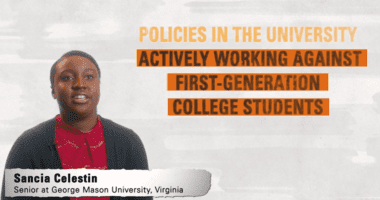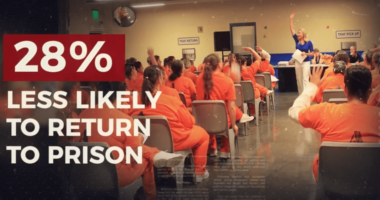College Hoops and Black Student Success: Why March Can Be So Maddening
Like many of you, I took some time during the last two weeks to relax and watch some college hoops. I’ve always loved college basketball, particularly March Madness. But, if I’m being completely honest, my inner education/racial justice advocate often finds the Madness … quite maddening. So, as a therapeutic exercise, I decided to pick winners and losers from the colleges and universities that made this year’s tournament on something that actually matters instead of their on-the-court success. First, though, let me tell you why March is a little maddening.
For starters, it is entirely too hard to ignore the obvious: Black student athletes are insanely overrepresented among the ballers on the hardwood. If you didn’t know any better, you might think most of the teams in the tournament were historically Black colleges and universities. But the truth is that many of these campuses enroll far too few Black students who aren’t athletes.
Take, for example, Gonzaga University in Spokane, Wash. It appears that roughly half of its men’s basketball team is Black, compared with just 1 percent of its undergraduate student population. Granted, Spokane — or Washington — may not be the most racially or ethnically diverse place in the nation (with just 4 percent of the state identifying as Black), but why can’t Gonzaga recruit Black undergraduates from the same places they have recruited their Black basketball players (Los Angeles; Memphis, Tenn.; San Antonio; Chicago; and Toyama, Japan)? This is about institutional priorities (and money) because it seems implausible that Gonzaga can scour the earth in search of the next Michael Jordan but can’t piece together a student body that is more than 1 percent Black. And frankly, UCLA and the University of Oregon aren’t much better, with roughly 2.5 percent and 2 percent of their undergraduates identifying as Black.
As we discuss in “A Look at Black Student Success,” Black students’ lack of access to exclusive institutions — which tend to have higher completion rates and more resources to spend on students — is one of the lesser discussed contributors to the 22-percentage-point difference between Black and White college graduation rates nationwide (41 percent vs. 63 percent). Our estimates suggest that roughly one-third of the completion gap is the result of this pattern, which disproportionately funnels Black students to what are essentially open access, four-year institutions where resources are thin and completion rates are chronically low.
The other maddening thing about the Madness concerns graduation rates for Black students. Each year, I find it increasingly difficult to celebrate the on-the-court success of Black student athletes while knowing that many of the institutions these players represent aren’t as invested in their off-the-court success. Year after year, Black male athletes graduate at lower rates than White male peers. But, at too many institutions, there are also large gaps between Black and White students who aren’t athletes. Our research shows that the average gap in graduation rates at four-year public and private institutions is an alarming 13.5 percentage points, with gaps exceeding 20 points at more than 1 in 4 institutions.
So to focus at least some of the chatter on the things that really matter, we decided to do a different type of “bracketology” for the teams that made the 2017 NCAA men’s tournament. We identify winners and losers based on their record of graduating Black students. (Only 59 of the 64 teams were included because Gonzaga, South Dakota State University, Bucknell University, University of Vermont, and Texas Southern University didn’t have enough Black or White students to meet our graduation rate cohort limit of 30.) Below we list our Final Four, Elite Eight, and Sweet Sixteen (along with our Failing Four, Egregious Eight, and Sad Sixteen) and the criteria we used to identify them.
Each of the following components contribute 1/4 of the total score for each university:
- The graduation rate for Black students. All graduation rate data are three-year weighted averages of the 2012, 2013, 2014 six-year graduation rates for first-time, full-time students.
- How that graduation rate compares with similar types of colleges. Similar (or peer) institutions are defined by CollegeResults.org.
- The gap in graduation rates for Black and White students.
- Access for Black students on campus. We rated public institutions based on the percentage of first-time, full-time Black students in the graduation rate cohort divided by the percentage of public high school graduates statewide who are Black. We rated private institutions, where less than half of undergraduates are from the institution’s state, the same. For private institutions where more than half of undergraduates are from another state, we rated those based on the percentage of first-time, full-time Black students in the graduation rate cohort divided by the percentage of public high school graduates nationwide who are Black. To calculate the percentage of public high school graduates who are Black, we used a three-year average of data on the high school graduating classes of 2006, 2007, and 2008.
Photo credit: MTSU Magazine











